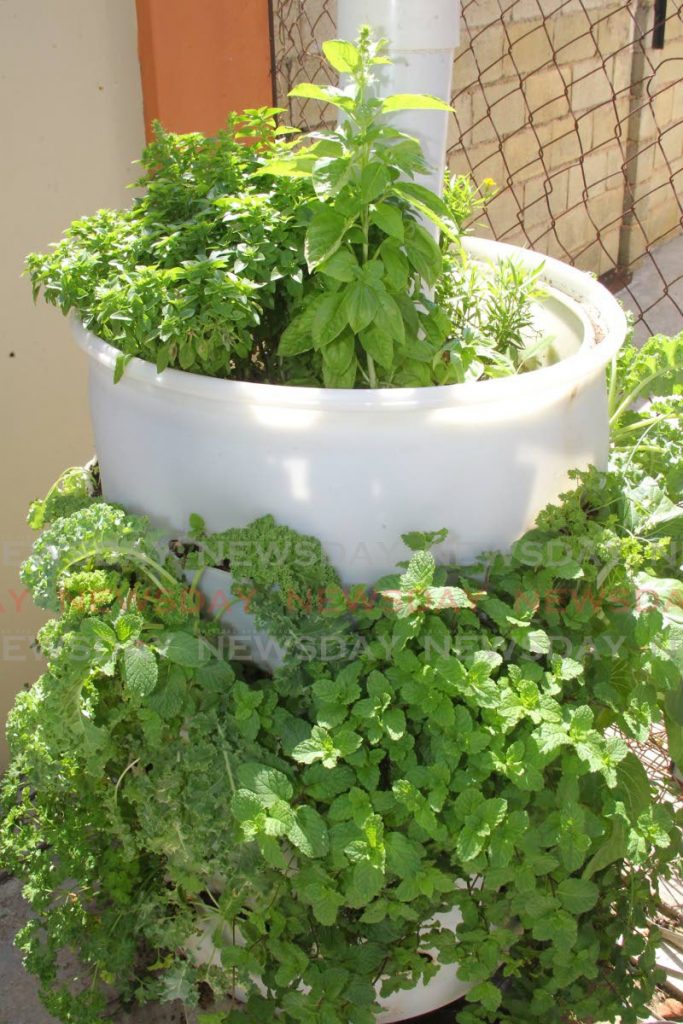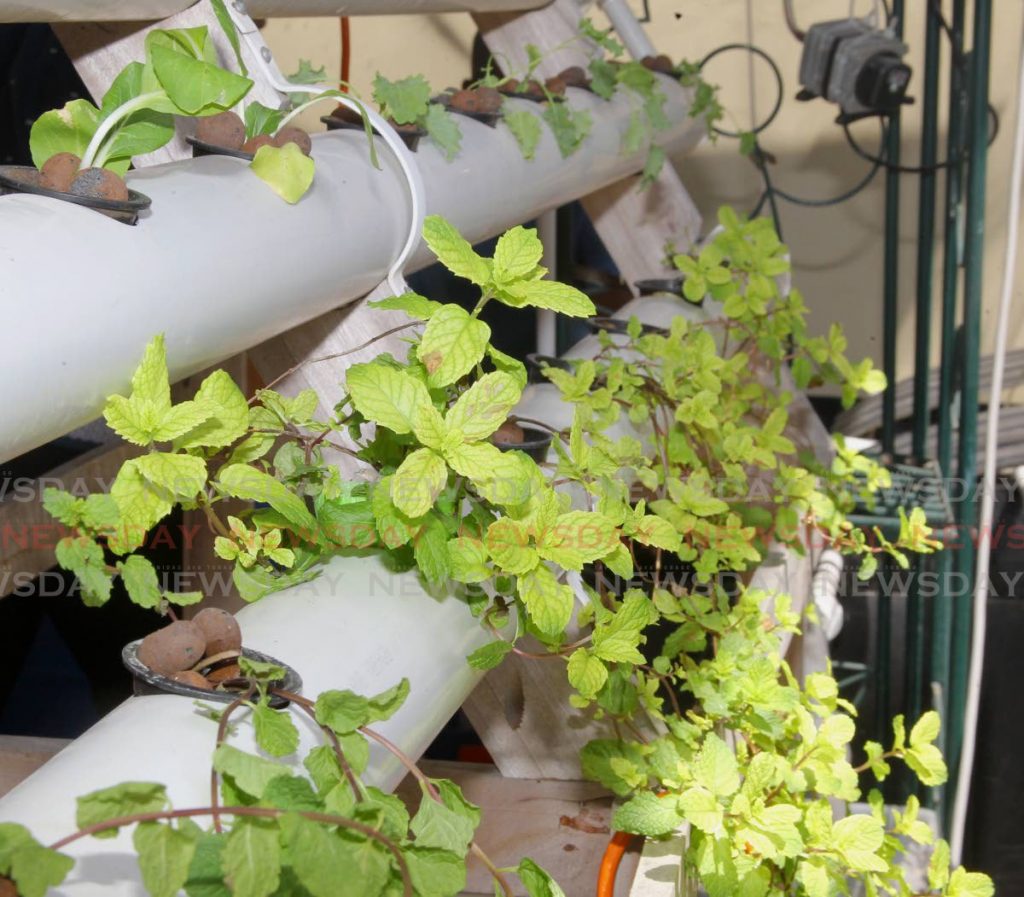Aquaponics: Farming for youths

When people think of farming they think of vast acres of land covered in crops, and back-breaking physical labour from sun up to sun down.
However, new aquaponics farmer, Nicholas Yee Loy, 33, proved it’s not necessary to have a lot of land or even be particularly industrious to get into farming. He assured that all one needed was a few feet of space and an initial output of time, money, and energy to set up the system.
He learned this and dived head first into aquaponics after taking a free course on the topic with the Ministry of Agriculture’s Extension Training and Information Services Division.
Aquaponics is a system that combines conventional aquaculture, where fish or other aquatic creatures are farmed, with hydroponics, growing plants in a water based solution. The waste produced by the creatures supplies nutrients for the plants.

“Now I’m actually interested in agriculture where before I didn’t have time for them things. People have the mindset that agriculture is hard work. Some young people have seen others toiling hard in the hot sun and it making no difference for them. We (youths) want to get away from that. Imagine I can get 200 or 300 heads of lettuce every month here in the back of my house, in the cool, and everything doing for itself and you pick it once a month. It’s a big difference.”
Yee Loy, who lives in Trincity, took the aquaponics course in September 2019 and started applying his knowledge in January.
He told Sunday Newsday he had an interest in it for many years but never did anything about it. One day someone posted an ad for free Ministry of Agriculture courses in a What’s App group. He said he was not interested in any of the other courses but applied to take aquaponics in Sangre Grande.
“The course was three days and I started to get a little bit addicted. Every month I started to look for different courses to do. From that I went and did the pepper sauce making, compost making, home gardening, solanaceous crops, and a lot of others.”
He said his family runs a small soup business on Saturdays, Hodge Podge Soup So Good, and he wanted good, healthy, organic seasonings to be easily available.

“I used to go to the Macoya market every Sunday and I realised I could probably grow my own thing but I wanted something where I didn’t have to till or plough any soil and this seemed like the best method. Even those that I have with soil I don’t really have to do much because I made irrigation and compost systems.”
Initially he planted basil, chive, chadon beni, tarragon, celery, parsley, and sage but has since included mint, kale, patchoi and lettuce. Now he said there are some weeks he does not need to buy seasoning.
He said aquaponics also appealed to him because he wanted fishes when he was younger but his parents did not want him building tanks in their yard. Now he has an enjoyable hobby taking care of his tilapia, as well as a food source that provides protein, and minerals when the fishes become too numerous.
The aquaponics system starts with the fish.
Fish excrete solid and dissolved waste into the water, packing it with ammonia. The waste water is piped to a settling tank where the solid waste settles at the bottom. The rest of the water with the dissolved waste flows into a biofilter tank or drum.
Yee Loy’s biofilter uses nets filled with plastic bottle caps on which nitrifying bacteria cells can colonise. The bacteria breaks down the ammonia to nitrites and then to nitrates which are needed by plants.
The nitrate-filled water is then pumped into tubes in which the roots of leafy plants, which can survive on nitrates alone, are submerged. The run off from the tubes is then recycled back into the system, to the fish.

He also uses the water with the solid waste to wet and fertilise his few soil plants.
“Initially it was just herbs to try one system to see how it would work. When I realised it was fun and it was actually working and the plants were actually growing, I decided to go into the intermediate bulk containers so I could have more fish and have a bigger aquaponics system.”
He said the initial keep back was building the system itself. He said he did not know anything about PVC or plumbing and wondered if he had to hire a plumber. However, he said when he actually tried to build it, he realised it was not difficult because he had only to cut the PVC and glue the pieces together.
That was not the only thing he tried.
Yee Loy explained that while looking into vertical aquaponics, a link to do-it-yourself vertical soil planters came up. He used a plastic barrel and modified it to include a vertical compost, a PVC tube with holes along the sides, at the centre so he would not have to physically fertilise the soil.
In the compost he placed earthworms, fruit and vegetable peelings, dried grass, brown leaves, shredded paper or cardboard, and wet it every day. He said through the holes the worms had access to the soil. They ate the compost, lived in and aerated the soil, and left worm castings behind. When the plants were watered, the water dissolved the nutrients from the castings to further fertilise the soil.
“Right now I’m just trying things out, getting more experience, learning more. Eventually I might commercialise it. Who knows.”

Comments
"Aquaponics: Farming for youths"